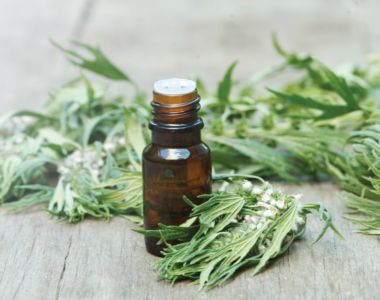When it comes to fresh herbs that uplift both the flavor of food and your overall well-being, kinza herb stands out with its distinct aroma and powerful benefits. Often used in traditional cooking and natural remedies across Asia, the Middle East, and Latin America, this humble green is finally gaining the recognition it deserves around the world.
Whether you are venturing into new ingredients for your culinary world or seeking to add more natural ingredients to your wellness regimen, kinza is worth adding to your list. Let us take you through all that you will want to know about this tasty herb.
What is Kinza Herb?
“Kinza” is a local term frequently applied to what most English speakers refer to as coriander leaves or cilantro. Coriandrum sativum is the scientific name for kinza, an annual herb belonging to the parsley family. Kinza has tender green leaves, a pungent smell, and is commonly utilized in food preparation, particularly in South Asian, Middle Eastern, and Latin American meals.
Surprisingly, the whole plant is edible—leaves, stems, seeds, and roots—but when individuals say “kinza herb,” they tend to refer to the fresh green leaves.
Why is Kinza Herb So Popular?
The kinza herb is renowned for both its taste and medicinal attributes. Its distinctive citrusy-pungent flavor ensures it serves as a regular garnish in numerous dishes, ranging from curries and salads to soups and sauces. But outside the kitchen, kinza has long been utilized in folk medicine. It’s said to ease digestion, combat inflammation, and cleanse the body.
What Are the Health Benefits of Kinza Herb?
Kinza herb is not merely a garnish; it’s nutrient and bioactive compound-rich. Some of its outstanding health benefits are as follows:
1. Rich in Antioxidants
Kinza is rich in antioxidants that neutralize detrimental free radicals in the body. This may shield your cells from damage and prevent chronic diseases.
2. Supports Digestion
Among the common applications of kinza is to calm stomach upsets and facilitate digestion. It is able to alleviate bloating and gas following meals.
3. Natural Detoxifier
The herb also tends to chelate heavy metals such as mercury and lead, which helps the body eliminate them. Chelation is the term used for this process.
4. Anti-Inflammatory Properties
Research indicates that the phytochemicals present in kinza have anti-inflammatory properties, essential for warding off disorders like arthritis and cardiovascular diseases.
5. Regulates Blood Sugar
Research indicates that kinza can lower blood sugar levels, thus perhaps making it a useful herb for individuals with diabetes.
How is Kinza Herb Used in Cooking?
Kinza is very versatile and utilized in raw as well as cooked states. Below are some common ways it’s used in cooking:
- Garnish: Sprinkle ground kinza over curries, soups, and lentils as a fresh touch.
- Chutneys and Sauces: Mix it with green chilies, lemon juice, and garlic to make a tangy dip.
- Marinades: Include kinza in meat or fish marinades for added flavor.
- Salads: Substitute it for lettuce or combine it with cucumber and tomato to create a colorful salad.
- One major tip: kinza loses flavor when it is overcooked. It’s best to add it towards the end of cooking.
Does Kinza Taste the Same to Everyone?
Surprisingly, no. Some report that kinza tastes like fresh citrus, whereas others say that it tastes soapy and vile. This variation is a result of a genetic difference in the way people taste aldehydes—a chemical used in soap and kinza. If you fall into the second category, don’t blame yourself—it’s in your genes!
Can You Grow Kinza Herb at Home?
Yes. Kinza is a very easy herb to cultivate, even in tiny areas.
Here’s how:
- Soil: Plant well-drained, rich soil.
- Sunlight: It requires around 4–6 hours of sunlight a day.
- Watering: Make sure the soil is moist but not wet.
- Harvesting: Start harvesting leaves after the plant has grown 6 inches tall. Frequent harvesting promotes bushy growth.
Growing kinza at home provides an uninterrupted supply throughout the year and is costlier than purchasing it weekly.
Is Kinza the Same as Cilantro or Coriander?

This is a common source of confusion. “Kinza,” “cilantro,” and “coriander” can refer to different parts of the same plant depending on the region:
- In South Asia and the Middle East, “kinza” usually refers to the fresh leaves.
- In North America, “cilantro” refers to the leaves, while “coriander” refers to the seeds.
- In the UK, as in most countries, “coriander” is used for both leaves and seeds.
So yes, they all come from the same plant, but the naming is different according to geography and purpose.
What Are Some Surprising Uses of Kinza Herb?
Aside from being used in food and medicine, kinza has some surprising uses:
- Natural deodorant: Antimicrobial activity can be used to eliminate body odor.
- Skin care: Kinza paste can be used for sunburns and skin irritations.
- Hair rinse: Kinza water can be used to make a rinse, which can encourage a healthy scalp and help prevent dandruff.
These applications transform kinza from a simple kitchen spice to a multi-purpose herb suitable for daily use.
Are There Any Side Effects of Kinza Herb?
Kinza is generally safe and useful in normal cooking quantities for most individuals. However:
- In uncommon situations, allergic reactions can occur.
- Overconsumption in medicinal levels may cause sensitivity to the sun or drop blood pressure too far.
- Expectant and nursing mothers ought to remain with food levels and eschew concentrated tinctures unless they receive a doctor’s advice.
Final Thoughts: Why You Should Add Kinza Herb to Your Life
Last Words: Why You Should Incorporate Kinza Herb into Your Life
Whether you’re adding a kick to your dishes or seeking a natural health advantage, kinza herb is a wise addition to your kitchen and your life. Its charming taste, medicinal benefits, and simplicity of use make it a real treasure of nature. From alleviating inflammation to aiding detoxification, kinza has a lot more going for it than flavor.
So next time you catch sight of a bundle of fresh green kinza at the store, don’t just think of it as a garnish—think of it as a green powerhouse waiting to boost your health and flavor your dishes.
FAQs.
Q: Is kinza herb the same as parsley?
A: No. Although they resemble each other, kinza and parsley taste and are used differently. Kinza has a stronger, citrusy scent.
Q: Can I freeze kinza herb to use later?
A: Yes. Chopping and freezing it in ice cube form with water or oil will help you maintain its taste.
Q: For how long can fresh kinza be stored in the fridge?
A: Around 5–7 days. Keep it in a wet paper towel wrapped in a plastic bag for improved freshness.
Q: Can kinza be added to tea?
A: Yes! Kinza leaves or seed tea can support digestion and cleansing.
Stay in touch to get more information on KalidCan ! Thank you.
